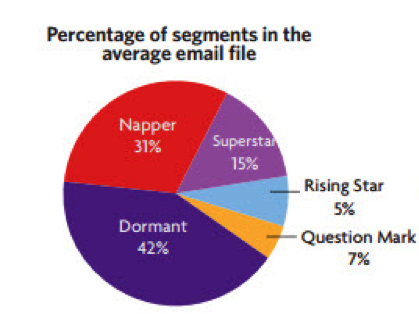Triggered Email Messages: Evaluate Your Performance with these New Benchmarks
"Epsilon released its Q4 2013 Email Trends and Benchmarks Report earlier this month and there’s some exciting new data here on triggered messages that will help marketers evaluate their email programs."
Epsilon released its Q4 2013 Email Trends and Benchmarks Report earlier this month and there’s some exciting new data here on triggered messages that will help marketers evaluate their email programs.
Last week I spoke about the value of triggered email messages at the Monetate Agility Summit. Here Epsilon is breaking out performance on triggered messages not just compared to non-triggered or business-as-usual messages, but also by industry segment.
It confirms what those of us who love triggered messages already knew:
- Triggered messages generate open rates an average of nearly 60% higher than business-as-usual messages
- When it comes to clicks, messages triggered in response to a recipient’s actions garner more than double the clicks of non-triggered missives

In the Epsilon report they’re showing open rates of 49% and click-through rates of 10%, on average, for triggered email messages. But I like to focus on the lift, not the actual average open and click rates.
These lifts are in line with what we’re seeing with our clients (actually, many of our clients are above the average, some way above). What isn’t reported here are conversion rates and (when appropriate) revenue – I can tell you that with our clients those metrics follow the trend of being higher for triggered messages than for business-as-usual messages – in some cases the conversion rate lift is actually higher than the percentage boost in open and click rates.
The report also provides triggered email benchmarks by industry – I’ll leave you to investigate these yourself, as I want to talk about another valuable addition to the report.
Epsilon is also providing information on subscriber activity based on their EASE (Email Activity Segmentation Evaluation) analysis.
 They focus on new (on the list three months or less) versus mature (all others) subscriber segments.
They focus on new (on the list three months or less) versus mature (all others) subscriber segments.
Active categories are Rising Stars (New segment) and Superstars (Mature segment). According to Epsilon these make up 20% of the average list – they are people that have opened and/or clicked in the most recent three months.
Nappers (Mature segment) are people that opened and/or clicked not in the most recent three months, but within the past year. These are roughly a third of the average list. Epsilon considers them actives, but I think they’re in an inbetween state – not quite active, but perhaps not yet truly inactive. They could really do either way.
And here’s where it gets interesting… the Dormant (Mature segment) and Question Mark (New segment) categories would be the inactives – and they make up nearly half of the average list. Dormant people haven’t opened or clicked in 12 months or more; Question Marks haven’t opened or clicked in the 3 months or less that they’ve been on the list. I’m not disputing the accuracy of this number, but I am a bit saddened by how high it is.
Obviously list practices will dramatically impact your percentages. One of our clients is vigilant about removing people from the list if they haven’t opened or clicked in the past three months – so they’d never have any Nappers or Dormants on their list (assuming they were only looking at addresses they were currently mailing).
Does this mean it’s okay to have 49% of your list not open or click? Or that it’s not okay if only 20% of your list is active? No. But it’s the first industry benchmark number that I’ve seen on activity levels, so I want to play with it, compare some of our clients to it and see how I can use this information to help our clients improve their email marketing performance.
Check out the full report for more detail on EASE.


